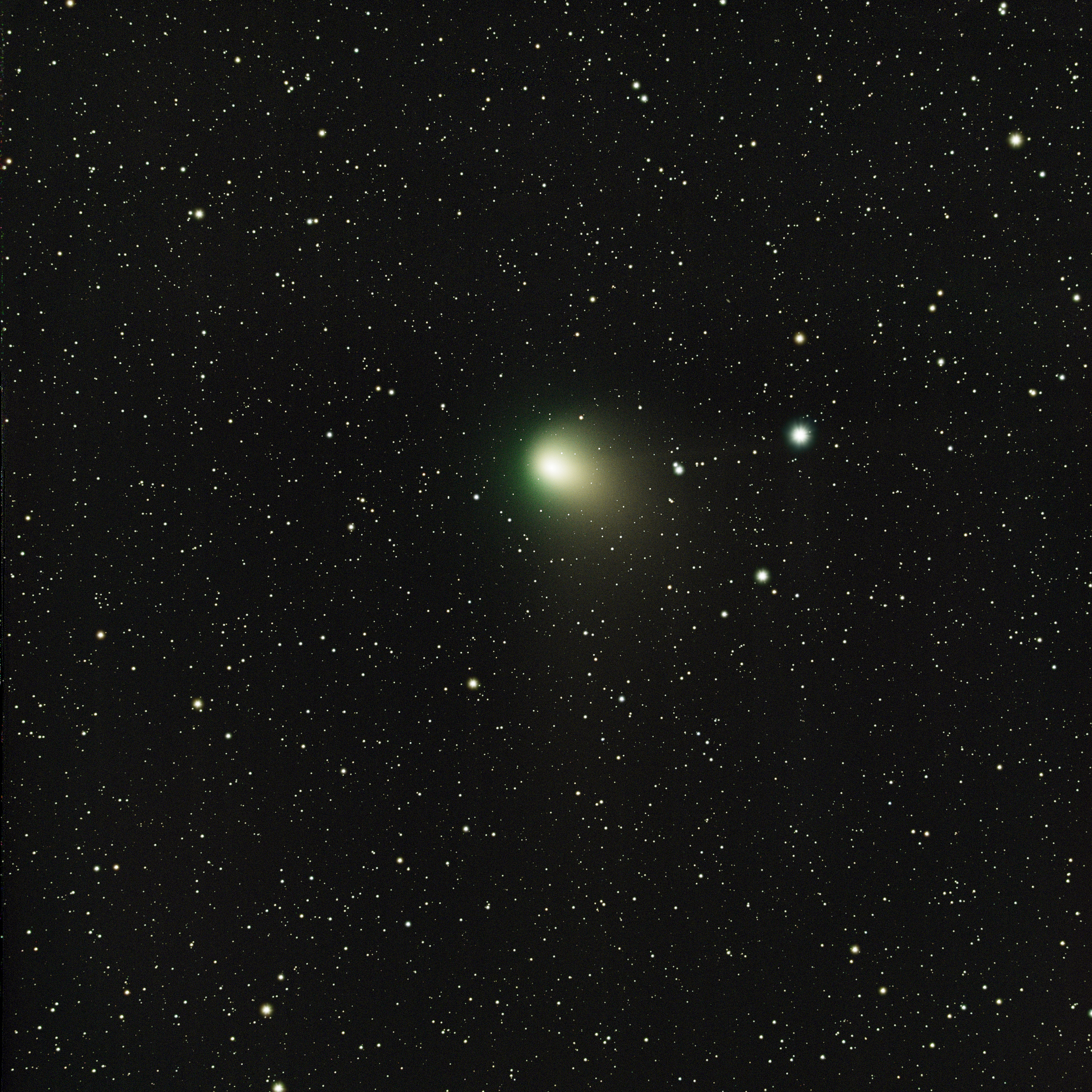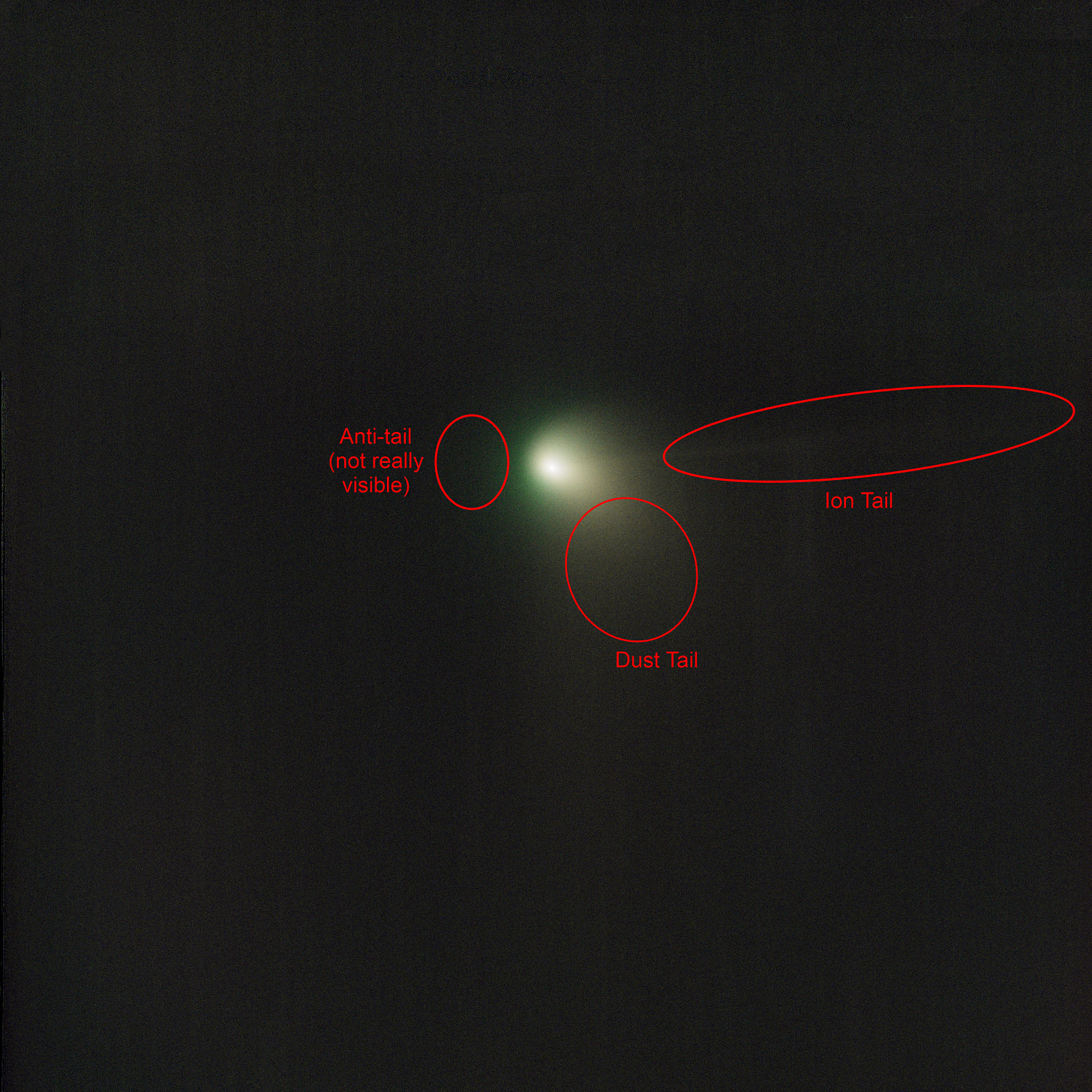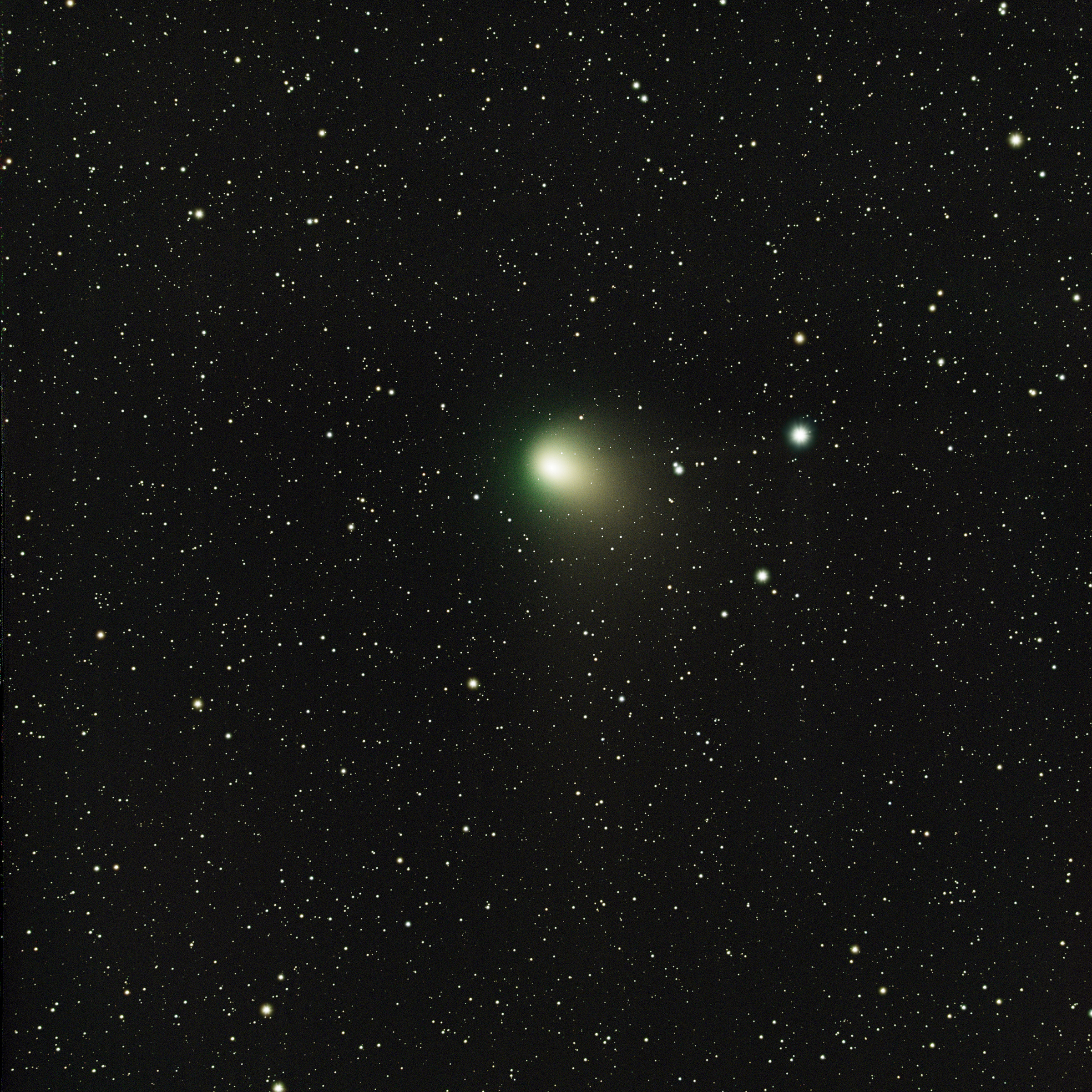First things first, the image:
Comet C/2022 E3
Click for a bigger, full-res image. I find astrophotos look best with my phone brightness up to max to see all the detail if you are on mobile.
The Object
Comet C/2022 E3 (Z.T.F.) has a mouthful of a name. It stands for Comet, discovered in March of 2022 at the Zwicky Transient Facility. It’s about a kilometer in diameter and is made of dust, rocks, and ice.
The last time Comet E3 was visible from earth was over 50,000 years ago. Researchers think it may actually be headed out of our solar system on this orbit around the Sun after it narrowly passed by several planets which changed its speed and trajectory.
On Feb 1st, 2023, the date the comet was closest to Earth (and the day my exposures were captured), it was roughly 26 million miles away. Some points of reference:
On that day Mars was about 80 million miles away.
26 million miles is about 100x farther away than the Moon at its closest point.
You can see some cool visualizations of Comet E3’s most recent pass by Earth here.
The comet’s green color comes from a chemical reaction in which diatomic carbon atoms in the comet are broken apart by UV light from the sun. The resulting energy creates a green glow.
The Image
This image was not easy to produce! The Earth spins, and that results in the sky moving relative to the Earth. To account for that for a normal astrophoto, the mount, and telescope need to carefully track the stars as they move over a long, multi-minute exposure.
With a comet, you have an extra variable: the stars are moving relative to the Earth, AND the comet is moving relative to the stars. That means if you stack exposures on top of each other with the stars lined up, you’ll be left with a blurry green line as the comet moves through the sky.
A very dark animation of Comet E3 moving through the sky across my 100+ exposures that make up the final image
The technique to solve this is to take the individual exposures, remove the stars, and then stack and process the shots of the comet and the stars separately. Then each of those separate images can be combined at the final stage. Luckily, I just got some experience with AI-driven star removal with my Flaming Star Nebula image using the aptly named StarXTerminator tool.
Here’s a view of the comet with all starless exposures stacked together and aligned on the comet. Comet C/2022 E3 has 3 tails:
A dust tail that has a brown / pinkish color
An ion tail of solid particles transitioning into gas that flows directly behind the comet
The anti-tail is actually an optical illusion that looks like it is coming from the front of the comet. Most comets don’t have this third tail which is part of what makes this comet unique and interesting.
You can see two of the three tails in my image, and they’re more easily seen in this starless comet view. The ion tail is very faint but looks like a faint whitish line coming out of the right side of the comet. The anti-tail, unfortunately, didn’t come through; I couldn’t capture it with the light pollution I have from my backyard and the limited experience I have with comet image processing.
Here’s an amazing view of the comet’s three tails:
I did not take this picture! Credit: Miguel Claro
I hope to be able to capture images like this one day!
Overall, processing this image was quite a challenge, and I had to start from scratch many times over. I learned a lot about the processing software I’m using and about teasing out the signal vs. noise in a limited, light-polluted set of exposures.
What’s Up Next
The endless streak of cloudy winter nights has continued and I’ve had very few opportunities to get out and capture some images. My hope is to revisit the first deep space object I ever captured, the Andromeda Galaxy, and pull out more of the detail and color there. I’d also like to experiment with a mosaic image that stitches together multiple fields of view from my telescope to capture a greater portion of the sky.
I hope you enjoyed the image and hoping for some clear skies and more photos to come!
-Kristian
The final image, one more time to save you a scroll






